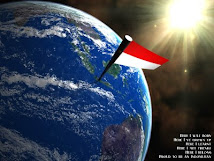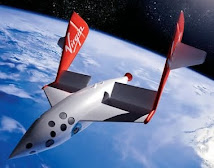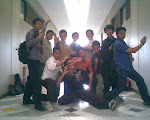Central for Research and Development for Winning
Nobel Prize in Physics at IndonesiaNobel Fisika Indonesia
"Seorang Pakar adalah seseorang yang mengetahui beberapa kesalahan terburuk yang dapat dibuat dalam subjek dan cara menghindarinya"
~Werner Karl H.~
Ada hal-hal yang sangat serius sehingga Anda hanya bisa bercanda tentang mereka."
~Werner Karl H.~

The Nobel Prize in Physics 1932
"for the creation of quantum mechanics, the application of which has, inter alia, led to the discovery of the allotropic forms of hydrogen"
 |
| Germany |
| Leipzig University Leipzig, Germany |
| b. 1901 d. 1976 |
Photos: Copyright © The Nobel Foundation
Nobel Lecture
Nobel Lecture, December 11, 1933
The Development of Quantum Mechanics
From Nobel Lectures, Physics 1922-1941, Elsevier Publishing Company, Amsterdam, 1965
In order to read the text you need Acrobat Reader.
Werner Heisenberg (5 December 1901 – 1 February 1976) was a German theoretical physicist who made foundational contributions to quantum mechanics and is best known for asserting the uncertainty principle of quantum theory. In addition, he made important contributions to nuclear physics, quantum field theory, and particle physics.
Heisenberg, along with Max Born and Pascual Jordan, set forth the matrix formulation ofquantum mechanics in 1925. Heisenberg was awarded the 1932 Nobel Prize in Physicsfor the creation of quantum mechanics, and its application especially to the discovery of the allotropic forms of hydrogen.[1]
Following World War II, he was appointed director of the Kaiser Wilhelm Institute for Physics, which was soon thereafter renamed the Max Planck Institute for Physics. He was director of the institute until it was moved to Munich in 1958, when it was expanded and renamed the Max Planck Institute for Physics and Astrophysics.
Heisenberg was also president of the German Research Council, chairman of the Commission for Atomic Physics, chairman of the Nuclear Physics Working Group, and president of the Alexander von Humboldt Foundation.
Career
Göttingen, Copenhagen, and Leipzig
From 1924 to 1927, Heisenberg was a Privatdozent at Göttingen. From 17 September 1924 to 1 May 1925, under an International Education Board Rockefeller Foundation fellowship, Heisenberg went to do research with Niels Bohr, director of the Institute of Theoretical Physics at the University of Copenhagen. He returned to Göttingen and with Max Born and Pascual Jordan, over a period of about six months, developed the matrix mechanics formulation of quantum mechanics. On 1 May 1926, Heisenberg began his appointment as a university lecturer and assistant to Bohr in Copenhagen. It was in Copenhagen, in 1927, that Heisenberg developed his uncertainty principle, while working on the mathematical foundations of quantum mechanics. On 23 February, Heisenberg wrote a letter to fellow physicist Wolfgang Pauli, in which he first described his new principle.[16] In his paper[17] on the uncertainty principle, Heisenberg used the word "Ungenauigkeit" (imprecision).[3][18][19]
In 1927, Heisenberg was appointed ordentlicher Professor (ordinarius professor) of theoretical physics and head of the department of physics at the Universität Leipzig; he gave his inaugural lecture on 1 February 1928. In his first paper published from Leipzig,[20] Heisenberg used thePauli exclusion principle to solve the mystery of ferromagnetism.[3][4][18][21]
In Heisenberg's tenure at Leipzig, the quality of doctoral students, post-graduate and research associates who studied and worked with Heisenberg there is attested to by the acclaim later earned by these people; at various times, they included: Erich Bagge, Felix Bloch, Ugo Fano, Siegfried Flügge, William Vermillion Houston, Friedrich Hund, Robert S. Mulliken, Rudolf Peierls, George Placzek, Isidor Isaac Rabi,Fritz Sauter, John C. Slater, Edward Teller, John Hasbrouck van Vleck, Victor Frederick Weisskopf, Carl Friedrich von Weizsäcker, Gregor Wentzel and Clarence Zener.[22]
In early 1929, Heisenberg and Pauli submitted the first of two papers[23][24] laying the foundation for relativistic quantum field theory. Also in 1929, Heisenberg went on a lecture tour in the United States, Japan, China, and India.[18][22]
Shortly after the discovery of the neutron by James Chadwick in 1932, Heisenberg submitted the first of three papers[25][26][27] on his neutron-proton model of the nucleus. He was awarded the 1932 Nobel Prize in Physics.[18][28]
In 1928, the British mathematical physicist P. A. M. Dirac had derived the relativistic wave equation of quantum mechanics, which implied the existence of positive electrons, later to be named positrons. In 1932, from a cloud chamber photograph of cosmic rays, the American physicist Carl David Anderson identified a track as having been made by a positron. In mid-1933, Heisenberg presented his theory of the positron. His thinking on Dirac's theory and further development of the theory were set forth in two papers. The first, Bemerkungen zur Diracschen Theorie des Positrons (Remarks on Dirac's theory of the positron) was published in 1934,[29] and the second, Folgerungen aus der Diracschen Theorie des Positrons (Consequences of Dirac's Theory of the Positron), was published in 1936.[18][30][31] In these papers Heisenberg was the first to reinterpret the Dirac equation as a "classical" field equation for any point particle of spin ħ/2, itself subject to quantization conditions involving anti-commutators. Thus reinterpreting it as a (quantum) field equation accurately describing electrons, Heisenberg put matter on the same footing as electromagnetism: as being described by relativistic quantum field equations which allowed the possibility of particle creation and destruction.
In the early 1930s in Germany, the deutsche Physik movement was anti-Semitic and anti-theoretical physics, especially including quantum mechanics and the theory of relativity. As applied in the university environment, political factors took priority over the historically applied concept of scholarly ability,[32] even though its two most prominent supporters were the Nobel Laureates in Physics Philipp Lenard[33] andJohannes Stark.[34]
After Adolf Hitler came to power in 1933, Heisenberg was attacked in the press as a "White Jew"[35] by elements of the deutsche Physik(German Physics) movement for his insistence on teaching about the roles of Jewish scientists. As a result, he came under investigation by the SS. This was over an attempt to appoint Heisenberg as successor to Arnold Sommerfeld at the University of Munich. The issue was resolved in 1938 by Heinrich Himmler, head of the SS. While Heisenberg was not chosen as Sommerfeld's successor, he was rehabilitated to the physics community during the Third Reich. Nevertheless, supporters of deutsche Physik launched vicious attacks against leading theoretical physicists, including Arnold Sommerfeld and Heisenberg. On 29 June 1936, a National Socialist Party newspaper published a column attacking Heisenberg. On 15 July 1937, he was attacked in a journal of the SS. This was the beginning of what is called theHeisenberg Affair.[18]
In June 1939, Heisenberg bought a summer home for his family in Urfeld, in southern Germany. He also traveled to the United States in June and July, visiting Samuel Abraham Goudsmit, at the University of Michigan in Ann Arbor. However, Heisenberg refused an invitation to emigrate to the United States. He did not see Goudsmit again until six years later, when Goudsmit was the chief scientific advisor to the American Operation Alsos at the close of World War II. Ironically, Heisenberg was arrested under Operation Alsos and detained in England under Operation Epsilon.[18][43][44]
Books
- Werner Heisenberg, Carl Eckart (translator), and F.C. Hoyt (translator) The Physical Principles of the Quantum Theory (Dover, 1930)
- Werner Heisenberg Das Naturbild der heutigen Physik (1955)
- Werner Heisenberg Philosophic problems of nuclear science (Fawcett, 1966)
- Werner Heisenberg Physics and Beyond: Encounters and Conversations (Harper & Row, 1971)
- Werner Heisenberg and Jürgen Busche Quantentheorie und Philosophie: Vorlesungen und Aufsätze (Reclam, 1979)
- Werner Heisenberg Philosophical Problems of Quantum Physics (Ox Bow, 1979)
- Werner Heisenberg Physik und Philosophie: Weltperspektiven. (Ullstein Taschenbuchvlg., 1988)
- Werner Heisenberg Encounters with Einstein (Princeton University, 1989)
- Werner Heisenberg and F. S. C. Northrop Physics and Philosophy: The Revolution in Modern Science (Great Minds Series) (Prometheus, 1999)
- Werner Heisenberg Der Teil und das Ganze: Gespräche im Umkreis der Atomphysik (Piper, 2001)
- Werner Heisenberg Deutsche und Jüdische Physik (Piper, 2002)
- Werner Heisenberg Physik und Philosophie (Hirzel, 2007)
- Werner Heisenberg Physics and Philosophy: The Revolution in Modern Science (Harper Perennial Modern Classics, 2007) (full text of 1958 version)
Sumber:
1. Wikipedia
2. Nobel Prize Org.
Ucapan Terima Kasih:
Ucapan Terima Kasih:
1. DEPDIKNAS Republik Indonesia
2. Kementrian Riset dan Teknologi Indonesia
3. Lembaga Ilmu Pengetahuan Indonesia (LIPI)
4. Akademi Ilmu Pengetahuan Indonesia
5. Tim Olimpiade Fisika Indonesia
Disusun Ulang Oleh:
Arip Nurahman
Pendidikan Fisika, FPMIPA, Universitas Pendidikan Indonesia
&
Follower Open Course Ware at MIT-Harvard University, USA.
Semoga Bermanfaat dan Terima Kasih




















